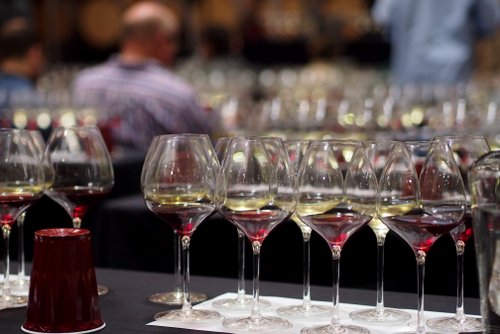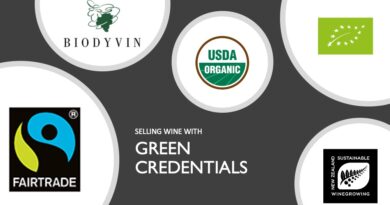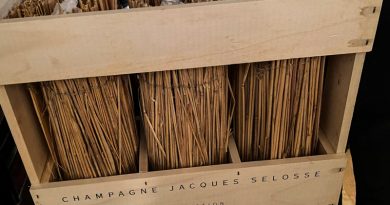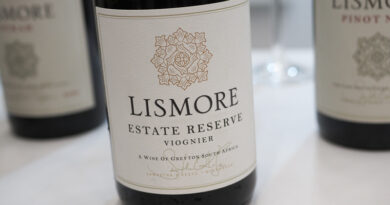Why we should run a mile if a wine retailer emerges claiming to ‘cut out the middleman’
Every now and then a new wine retailer emerges. Their claim is that they will ‘cut out the middleman’ and offer you wines from leading wine producers at ‘farm gate’ prices. It sounds plausible: here’s a business model that involves retailers connecting customers directly to the wineries that they have scouted, thus cutting out a margin. These wineries (they say) are usually small, family-owned businesses, and when you spend £10 on a bottle, you’ll be getting a lot more for your money.
I say: if you see anyone claiming to be cutting out the ‘middleman’, then run a mile. Or even further. Let me explain why. [I’d also say be very wary of wine businesses that aren’t retailers, but claim to be facilitating DTC (direct to consumer) sales, putting you in touch with wineries so you can buy straight from them, for similar reasons.]
Of course, direct sales from wineries to customers does work very well, and in many countries this is the primary revenue stream for some wineries. But this is for domestic sales. If you introduce an international border then this all tends to fall down (the exception might be within the European Union). This is because wine is heavy and breakable (and expensive to ship), and alcohol is regulated.
If, as a private customer, you want to buy wine in the UK that is made elsewhere, then someone will have to import it through official channels, and pay duty and VAT, before selling it to you. Now this could be the company that aims to cut out the middleman and offers you a very good deal on the wine, just as it could be an importer who then sells the wine on. But there are two reasons why it is unlikely to be the former.
The first is that almost all good wineries are already imported into the UK. They have been picked up already and there is an agency agreement in place that, in most cases, is exclusive. This exclusivity allows the importer to invest in building the market for these wines, selling them into retailers and restaurants. Of course, there’s nothing to stop wineries doing this job themselves if they have the skills and resources. But connecting wineries with customers in export markets is skilled work that requires an understanding of the market the wines are being introduced to. Not many wineries have this capacity and ability to act as their own importer in the export markets they want to sell to.
The second is that ‘middle men’ play an important role in scouting new wineries, and have expert local knowledge. A retailer is going to find it hard to pick up the right wineries to import. There are literally tens of thousands of different wineries or wine producers in the world, and the job of connecting them to customers in export markets is time-consuming and requires a skill set – if a UK retailer were to start to facilitate this direct relationship, they’d need staff to do this, and the overheads would be similar to that of the margin of the ‘middle man’.
When you see the details of how much a producer gets for a bottle of wine, and then how much of the sticker price it is sold for is taken up by two sets of margins (importer/agent and then restaurant/shop), it’s tempting to think that there must be a way to make wine cheaper by going direct. This ignores the fact that it costs a lot of money to find customers. For a winery to sell direct locally, they’ll probably need a tasting room or cellar door facility, or the staff availability to receive visitors to get these direct sales. Of course, a few wineries are well known enough to be able to sell their entire allocation to a mailing list, but this is just a few. Where a hybrid model of direct sale and selling through retailers and restaurants in the local market is taken, they usually have to be careful not to undercut their customers, so this means you won’t get the wines cheaper by buying direct. Once sales cross international borders and shipping and taxes are involved, using an importer is often the only way to go.
If a retailer aims to connect customers directly to wineries, then there’s a significant expense they have to bear: customer acquisition and retention. It costs quite a bit to acquire customers (the CAC: customer acquisition cost), and then it costs more to retain those customers (after all, you are interested in the LTV [lifetime value] of that customer]. This will cut into any savings that might be made. These businesses also tend to be high margin, and usually despite their claims, retailers connecting you directly to winemakers or wineries aren’t offering wine any more cheaply than traditional routes.
So how do these DTC retailers work? One way is by creating high-margin own label or private label wines. These are also sometimes called soft brands. They might work with a cooperative, or large winery – or they might even have winemakers who source bulk wines and blend them, slapping a special label on that makes it look like a proper producer’s wine. These wines are exclusive to them, so the customer can’t do any price comparison.
The other way that some operate is by effectively lying: for all the talk of connecting wineries directly to customers, they buy wines from middle men – the agents in the UK, for example. They have to because most wineries already have exclusive representation here.
A good middleman earns their slice of the action. Without the importers and agents, the wine world would be a much poorer place and it would be far harder to encounter interesting wines.




